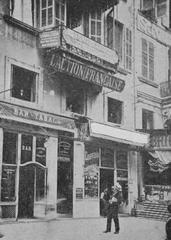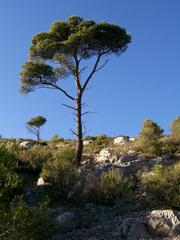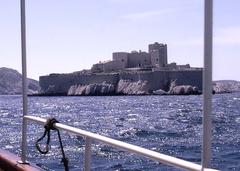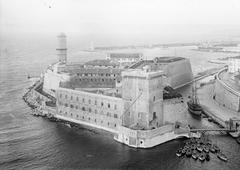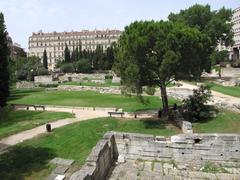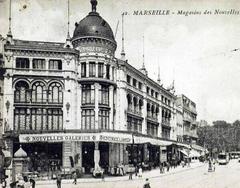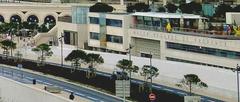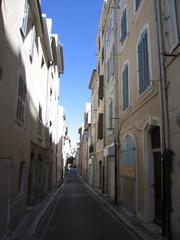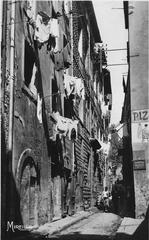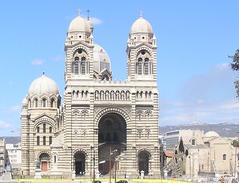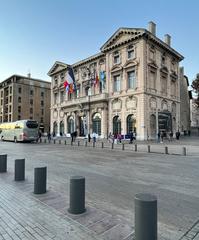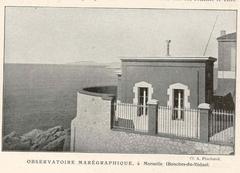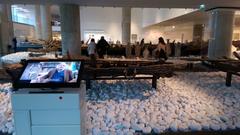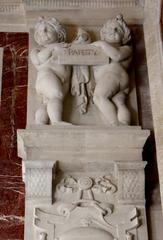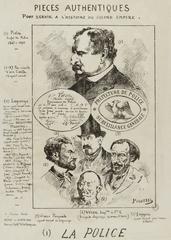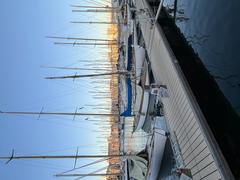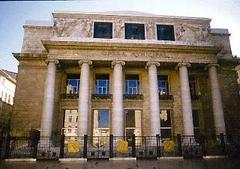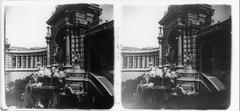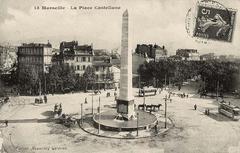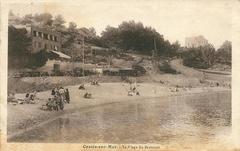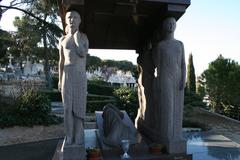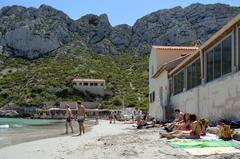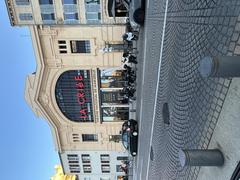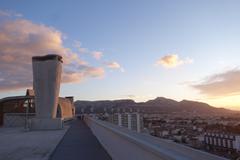Saint-André Marseille: Visiting Hours, Tickets, and Historical Significance Guide
Date: 04/07/2025
Introduction: Discovering Saint-André, Marseille
Nestled in Marseille’s 16th arrondissement, the neighborhood of Saint-André offers visitors a unique blend of ancient history, diverse cultures, and vibrant community life. As one of the oldest areas in a city itself founded around 600 BCE by Greek settlers from Phocaea, Saint-André reflects Marseille’s story as a crossroads of civilizations. From the prehistoric Grotte Cosquer cave paintings to the thriving multicultural communities of today, Saint-André is a microcosm of Marseille’s enduring Mediterranean spirit (marseillecityofculture.eu; snippetsofparis.com).
Today, Saint-André is renowned for its authentic Provençal atmosphere, historical landmarks, and a lively social fabric shaped by centuries of migration and change. Whether you are a history enthusiast, a cultural explorer, or simply seeking an off-the-beaten-path Marseille experience, this guide will provide you with essential information on visiting hours, tickets, transportation, and tips for making the most of your time in this fascinating neighborhood.
Table of Contents
- Historical Foundations of Marseille and Saint-André
- Religious and Cultural Significance
- Key Attractions, Visiting Hours, and Tickets
- How to Get There and Getting Around
- Local Life, Events, and Practical Tips
- Frequently Asked Questions (FAQs)
- Summary and Recommendations
- Sources
Historical Foundations of Marseille and Saint-André
Ancient Origins and Growth
Marseille’s origins date to Greek settlers establishing Massalia around 600 BCE, whose influence is still evident in the city’s urban plan and archaeological discoveries. The area around Saint-André shows signs of even earlier human presence, with the Grotte Cosquer’s Paleolithic cave art providing a window into the region’s prehistory (marseillecityofculture.eu; snippetsofparis.com).
Following the Greek period, Massalia was incorporated into the Roman Empire after 49 BCE, when it became an important port in Roman trade networks. Roman engineering—roads, aqueducts, and theaters—left a lasting mark on the region (cillatravel.com).
Christianity and Medieval Development
The rise of Christianity brought new religious and cultural institutions, notably the nearby Abbaye Saint-Victor, founded in the 5th century. This abbey influenced the surrounding parishes—including what became Saint-André. During the medieval era, Saint-André developed as a parish with agricultural lands, vineyards, and a distinct community identity (edrawmind.com).
Modern Era: Industrialization and Migration
In the 19th and 20th centuries, Saint-André transformed from a semi-rural parish into a vital part of Marseille’s industrial and urban expansion. Waves of migration—first from Italy, then North and Sub-Saharan Africa—enriched the neighborhood’s cultural mix and established its reputation as a cosmopolitan, working-class district (cillatravel.com).
Religious and Cultural Significance
At the heart of Saint-André’s community is the Église Saint-André, a parish church with roots in the region’s medieval past. The church serves as both a place of worship and a center for local events, embodying the blend of tradition and multiculturalism that defines the neighborhood (saint-andre-europe.org).
Cultural life in Saint-André is vibrant, with markets, local festivals, and religious celebrations reflecting the area’s diverse origins. Annual events, such as Catholic processions, Ramadan, and multicultural fêtes, invite both locals and visitors to participate in the neighborhood’s rich traditions.
Key Attractions, Visiting Hours, and Tickets
Église Saint-André
- Hours: Open daily from 9:00 AM to 6:00 PM. Masses typically on Sundays at 10:00 AM and weekdays at 7:00 PM.
- Tickets: Free entry; donations welcome.
- Accessibility: Main areas are wheelchair accessible, but some historic features may present challenges. Contact the parish for specific needs (saint-andre-europe.org).
Local Markets
- Saturday Market: 7:00 AM to 2:00 PM. A great place to sample Provençal and North African food, and buy local produce and handmade goods.
Nearby Attractions
- Abbaye Saint-Victor: 5th-century abbey, open daily (times may vary).
- Old Port (Vieux-Port): Open year-round; accessible by bus or train.
- MuCEM: Tuesday to Sunday, 10:00 AM–7:00 PM. Entry approx. €11.
- Plages de Corbière: Open year-round; lifeguards in summer.
Guided Tours
- Availability: Guided tours of Saint-André and its landmarks are available on weekends and by arrangement through local cultural associations and Marseille’s tourism office (marseilletourisme.fr). Booking ahead is recommended.
How to Get There and Getting Around
Public Transport:
- Train: TER regional train to Gare de Saint-André.
- Bus: Multiple city bus lines link Saint-André to central Marseille and the Old Port.
- Tram: Lines T1 and T2 serve the district.
- Car: Limited parking; consider public transport during festivals and busy periods.
From Marseille Saint-Charles Station: Connect via bus or TER train to Saint-André.
From Marseille Provence Airport: Take the shuttle to Saint-Charles, then bus or train (Dreaming in French).
Navigating the Neighborhood:
- Best explored on foot to appreciate historic streets and markets.
- Comfortable shoes recommended due to hilly terrain and cobblestones.
- For limited mobility, main streets and public spaces are accessible, but check specific sites in advance (Vigilios).
Local Life, Events, and Practical Tips
Cuisine and Markets:
- Sample Marseille’s famous navettes biscuits, fresh seafood at Port de l’Estaque, and multicultural dishes at local cafés (thetouristchecklist.com).
- Markets are fixed-price; bargaining is uncommon.
Events and Festivals:
- Annual festivals include Divali, Catholic processions, and neighborhood fêtes.
- Local events provide authentic cultural experiences (The Tourist Checklist).
Accommodation:
- Saint-André has limited hotels; consider staying in L’Estaque or Vieux-Port for more options.
Safety:
- Saint-André is generally safe, but practice standard urban precautions: keep valuables secure and stay in well-lit areas at night (Vigilios).
Local Etiquette:
- Greet with “Bonjour,” and thank shopkeepers when leaving.
- Dress modestly in churches; ask before taking photos inside.
Language:
- French is primary; English spoken in tourist areas, but basic French phrases are helpful.
- Translation apps enhance communication.
Health and Facilities:
- Tap water is safe (Lonely Planet).
- Pharmacies are marked with a green cross.
- Public restrooms are limited; use facilities in cafés or public buildings.
Internet:
- Free public Wi-Fi is scarce; many cafés provide Wi-Fi to customers.
Frequently Asked Questions (FAQs)
Q: What are the visiting hours for Église Saint-André?
A: Open daily, 9:00 AM to 6:00 PM. Masses on Sundays at 10:00 AM and weekdays at 7:00 PM.
Q: Is there an entrance fee for the church or markets?
A: No, both are free; donations to the church are welcome.
Q: Are guided tours available?
A: Yes, on weekends and by appointment—book via local associations or the tourism office.
Q: How do I get to Saint-André from central Marseille?
A: Take a TER train or bus; both are efficient and affordable.
Q: Is Saint-André accessible for people with disabilities?
A: Main sites offer some accessibility, but terrain and infrastructure may pose challenges. Contact ahead for assistance.
Q: When is the best time to visit?
A: April–June and September–October for mild weather and fewer crowds.
Summary and Recommendations
Saint-André is a living testament to Marseille’s rich history and multicultural evolution. Visitors can enjoy free access to the Église Saint-André, lively markets, and a welcoming atmosphere reflective of the city’s Mediterranean spirit. The area’s convenient transport links, authentic eateries, and vibrant events make it an ideal destination for those seeking a genuine Marseille experience.
Top Tips:
- Use public transport for convenience.
- Visit during local festivals for a true taste of community life.
- Download the Audiala app for interactive maps, event updates, and virtual tours.
- Explore nearby attractions like the Old Port and Abbaye Saint-Victor for a comprehensive Marseille itinerary.
Sources
- History of Marseille (Marseille City of Culture)
- Marseille History and Prehistoric Sites (Snippets of Paris)
- Marseille Traveler’s Guide (Cilla Travel)
- Historical Landmarks in Marseille (EdrawMind)
- Saint-André Parish Official Website
- Marseille Tourism Official Site
- Saint-André Neighborhood Guide (Provence 7)
- Dreaming in French – Marseille Guide
- Vigilios – Marseille Safety
- Lonely Planet – Marseille Tips
- The Tourist Checklist – Marseille
